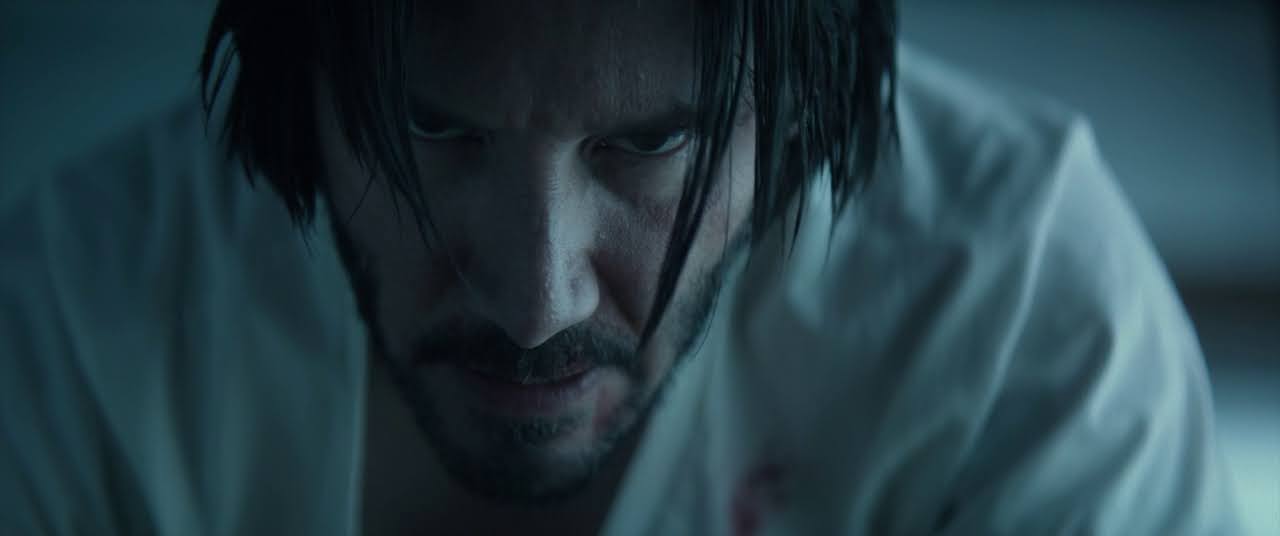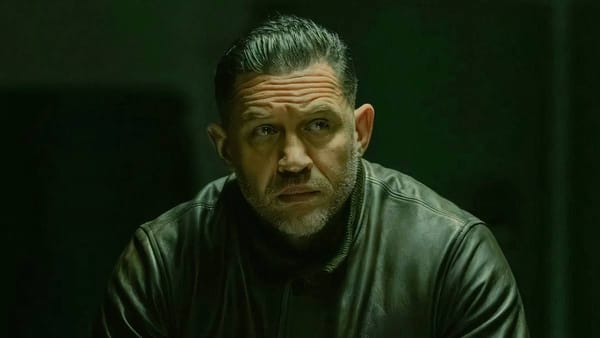A world built on one broken man.

There’s an elegance to JOHN WICK you feel before you can fully define it. The film moves with a kind of ritual precision — clean lines, purposeful rhythms, and an emotional honesty that refuses to hide behind gunfire. What could’ve been a disposable revenge thriller becomes something almost ceremonial: a story about grief, consequence, and the fragile humanity that survives beneath violence.
Keanu Reeves plays Wick with a quiet devastation that lingers long after the action. The film’s most important beat isn’t the nightclub carnage or the infamous “pencil” legend — it’s Reeves sitting alone in the dim light, hands shaking, mourning a small beagle who carried the last trace of his old life. The film understands grief as a landscape, not a narrative excuse. It takes that pain seriously, and by doing so, gives the violence a moral weight uncommon in modern action cinema.
Wick may sit at the centre of the frame, but the world around him carries its own gravity — and the film works because everyone orbiting him sharpens his edges with complete authenticity. Michael Nyqvist plays Viggo like a man who respects the legend he’s accidentally reawakened, fear and admiration tangled together. Alfie Allen’s Iosef embodies the kind of inherited arrogance that breaks sacred things without understanding the cost. Willem Dafoe brings Marcus a quiet, almost elegiac warmth, hinting at a past Wick left behind but never escaped. And Ian McShane moves through the Continental with that unhurried authority that makes the hotel feel timeless, ancient even. None of these actors overshadow Reeves — they define Wick by how they react to him, fear him, remember him.
The action choreography has the clarity of calligraphy. Every movement is controlled, deliberate, almost meditative. Bullets, blows, grapples — all arranged with the discipline of people who understand that action is a visual language. The nightclub sequence isn’t exciting because it’s loud; it’s exciting because it’s readable. Long takes, full bodies in frame, spatial coherence. The film trusts viewers to follow the flow rather than be bludgeoned by cuts.
What surprises me each time is how humane the film feels. Not soft — humane. The assassins follow rules, codes, and boundaries. There is order in their chaos. In an era obsessed with invincible superheroes and digital spectacle, JOHN WICK keeps its world small and its stakes intimate: one man, one wound, one unbearable loss. And yet it hits universally because it recognizes something true — grief is global, and revenge is tempting because it shapes the shapeless.
The Continental hotel, shot with near-reverence, becomes a sort of secular shrine — a place where violent people pretend they still have principles. The film frames this world with a mixture of awe and critique, letting its mythology grow without overexplaining it. That restraint is part of the magic.
But it’s the sincerity that elevates everything. The film never mocks Wick’s sorrow. It never treats the bond between a man and a dog as trivial. It shows how love can break a person open — and how grief can push them into a kind of terrible clarity. JOHN WICK is myth-making through minimalism: a revenge story built on silence, symmetry, and emotional truth. It’s stylish without being hollow, brutal without being numb, and unexpectedly moving in the spaces between gunshots. A stylish, aching, beautifully controlled piece of cinema. And the beginning of a modern mythology.




